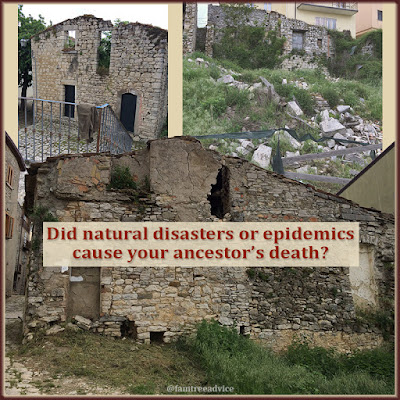Have too many DNA matches? Follow these steps to pick off the easier ones.
You may have a ton of DNA matches to figure out. Don't get overwhelmed. What I'm about to describe should help you solve a good number of your DNA matches.
For some others, you'll have to contact the person for more information. For still others, the connection may be too distant for either of you to figure out.
Remember: The more developed your tree, the better your chance of identifying your DNA match.
Let's get started.
1. Sort Your DNA Matches by Closeness
How you find your closest matches depends on your DNA testing site.
- Ancestry DNA lists your matches in order of closeness by default. My list begins with my parents (who I tested), a 1st cousin, 2nd–3rd cousins, 3rd–4th cousins, etc.
- FamilyTreeDNA, where I uploaded by raw DNA results from Ancestry, lists my matches in a table with the closest matches on top. If they're not listed in order for you, click the top of the "Shared cM" column to sort the list from largest to smallest. (A cM is a centimorgan—a measure of how much DNA you share.)
- GEDmatch, where I also uploaded my raw DNA, has a "One-To-Many DNA Comparison Result" that lists matches by "Total cM".
- Other testing sites, like 23andMe, will have a way for you to see your matches that gives priority to the closest matches.
 |
| See what's available and choose which DNA match you want to solve first. |
2. Consult a Relationship Chart
With your closest DNA matches at the top of the list, pick the first one you can't identify. How many cMs do you share with this match?
Start by looking up all your possible relationships. Use this consanguinity chart showing possible relationships based on shared cMs. (Consanguinity means "close relationship or connection".) Pay attention to the number in the gold-colored box in each square of the chart. That's the number of cMs. (This chart is very helpful, too.)
If your match has no family tree available, you're stuck for now. You'll have to contact and share information with your match. Let's look at how this process works on Ancestry when your match has included a family tree.
3. Look at the Family Trees
If you have your DNA online and haven't posted a decent-sized family tree, you're a part of the problem. No one can figure out their exact connection to you. Your genealogy website can't make an educated guess. Worried about privacy? Put your effort into adding facts for your older generations. I want to know who your great grandparents were.
I have a match called T.H. who has a small tree. Ancestry says T.H.:
- shares 35 cMs with me
- is in the range of 4th–6th cousin
- is on my father's side (This is the benefit of making your parents test.)
Before going to T.H.'s family tree, I checked the consanguinity chart. With 35 shared cMs, this DNA match could be my:
- 3rd cousin once removed
- 2nd cousin 3 times removed
Notice the consanguinity chart and Ancestry have different estimates of our relationship. Here's a tip. On Ancestry, click the little letter i next to your estimated relationship. Or click the relationship itself, if it's a link. You'll see all your possible relationships. For T.H., the highest possibilities are 4th cousin or 3rd cousin twice removed.
This helps you gauge how far up your tree to look for your connection.
T.H.'s family tree on Ancestry has 5 people, and 3 are private. That's as disappointing as can be. But her grandparents, the only unmasked names, are familiar. Her grandfather has my maiden name.
That's all I can learn from T.H.'s family tree. So I'll turn to my tree.
Her grandparents are already in my family tree. This was a big branch I met many years ago in Canada. It turns out T.H. is already in my family tree, too! Now I can add a note to her name on my DNA match list. From now on, I'll know I've identified her as my 5th cousin once removed. (Quite far from the estimates!)
Many times you'll have only the slimmest family tree to work with. I have 3 DNA matches that are like the golden ticket to Willy Wonka's chocolate factory. Ancestry says they match both my father and my mother. Of the 3, one has no tree. The second has a tree with only herself. The third has a tree with 228 people, but only one Italian name. (I'm only Italian.)
 |
| If you recognize names from your ancestral hometowns, it helps with your DNA matches. |
I recognize this last name as being from my grandfather's hometown of Colle Sannita. My DNA match's ancestor Americanized his first name from Donato to Dan, but I found him. His 1896 birth record says his parents were Francesco Zerrillo and Libera Piacquadio.
Using my Italian document collection, I extended Donato Zerrillo's tree 4 generations. On some branches I went even further than that. But there's no connection to me that doesn't involve a marriage or an in-law.
This is the real lesson of your DNA matches. Each one takes research to solve. If you're lucky and find someone like me in your match list, you could gain a windfall of ancestors. But most of your matches will leave the work up to you.
Take another look at your DNA match list. Are there easier ones you can knock off? Look for a high number of cMs and a match with a family tree. Look for last names you recognize. When you've finished the easy ones, you can sharpen your genealogy research skills on the rest.









